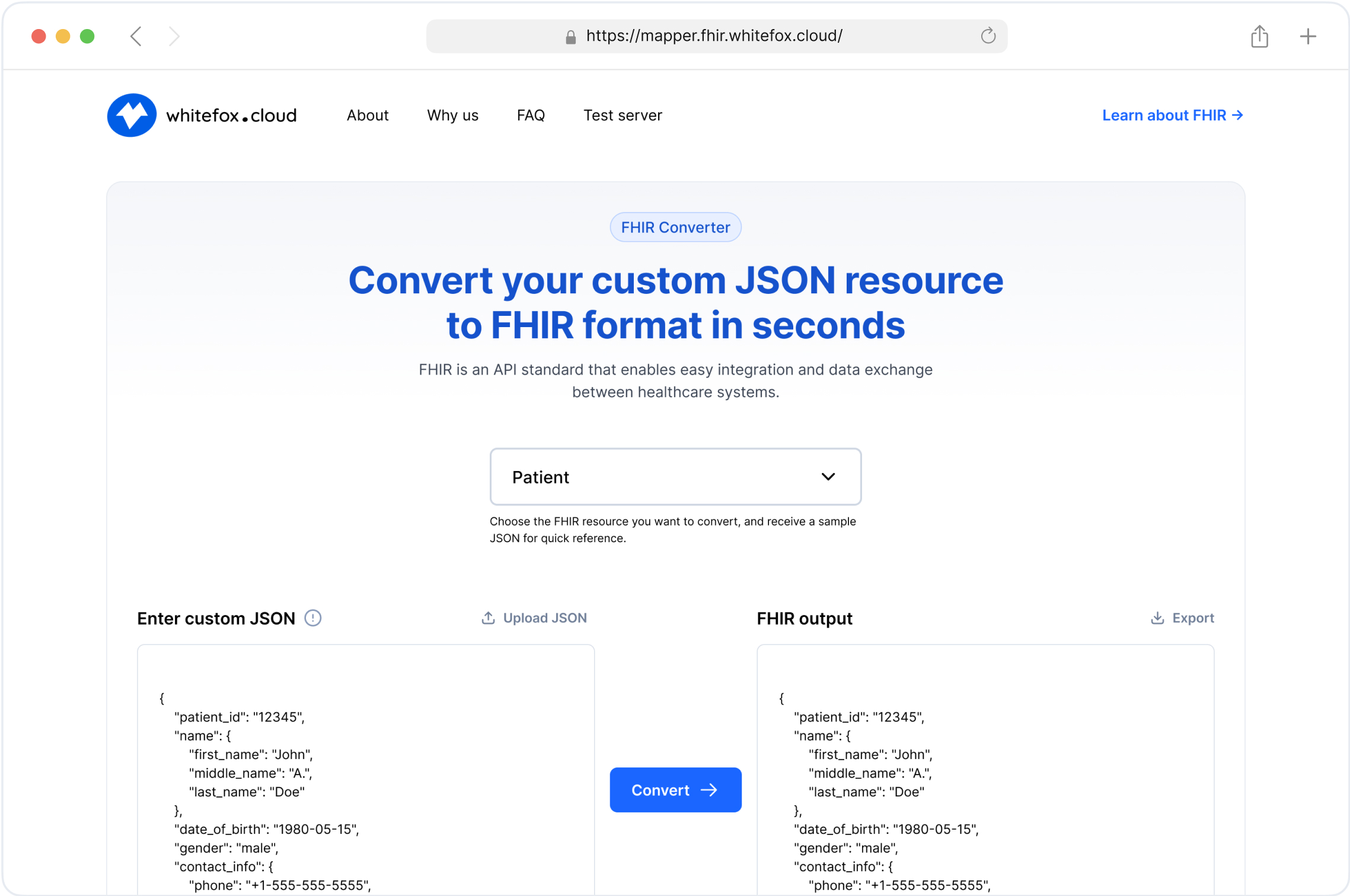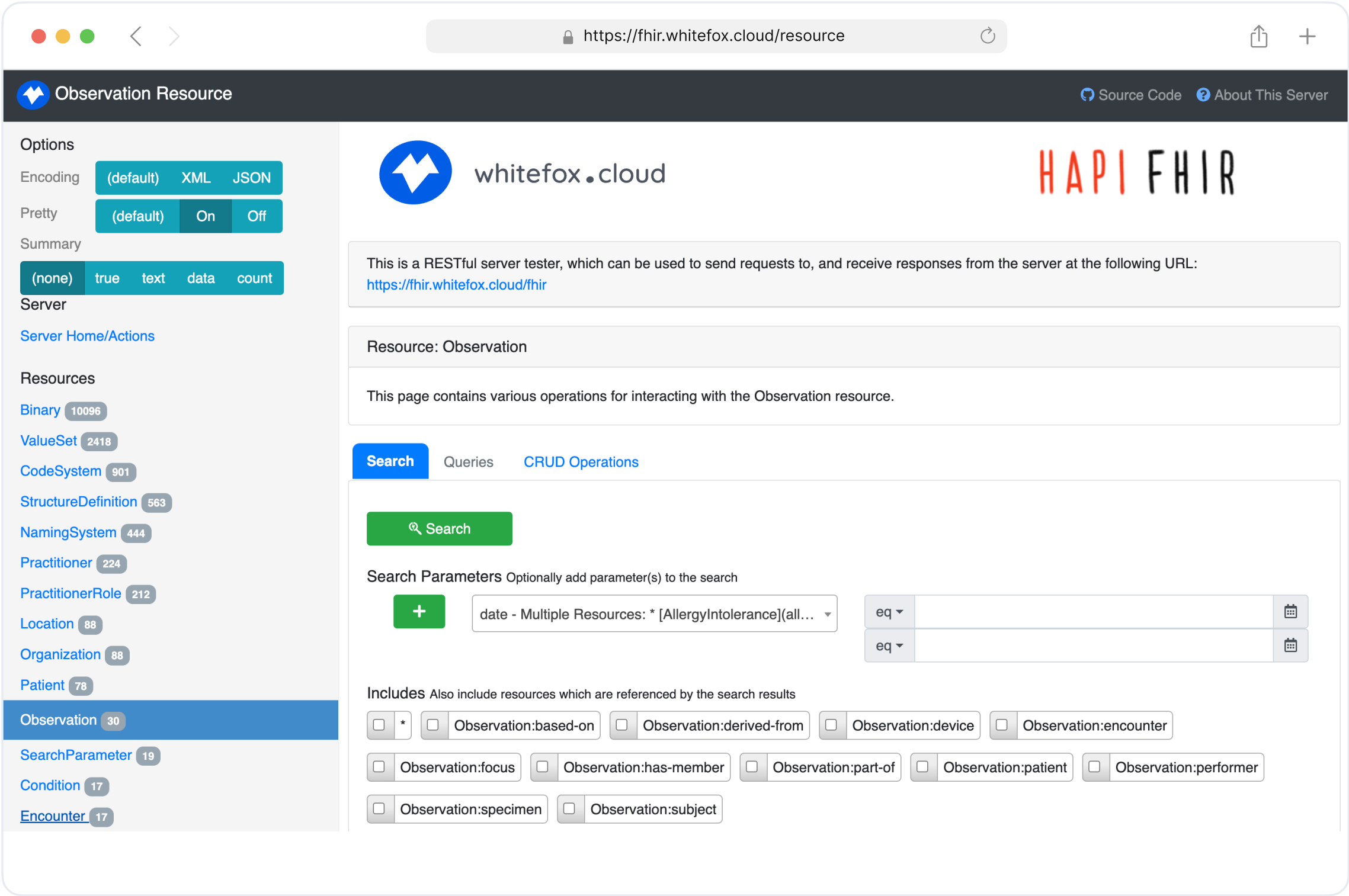
FHIR Server Options
Introduction
This comparison is intended to help companies or individuals choose the most appropriate FHIR server solution for their needs. FHIR (Fast Healthcare Interoperability Resources) servers play an important role in healthcare data exchange and interoperability. After reviewing the essential features of each option, stakeholders can make informed choices about software licensing, deployment options, FHIR version support, cloud availability of the market, programming language, query language, availability, and established year.
Key Factors to Take into Account
Software Licensing: Whether the software is open source or proprietary, and associated licensing terms.
Deployment mode: Deployment options include on-premise, cloud-primarily based, or hybrid.
FHIR Version Support: Compatible with various versions of the FHIR standard, such as FHIR R5, R4, DSTU3, and others.
Available in the cloud market: Whether the solution can be purchased or utilized in the commercial cloud market is measured by its availability in the market.
Programming Language: The primary programming language used for development and customization.
Query Language: The query language supported by the FHIR server to retrieve and exchange data.
Au. Availability: whether the solution is available globally or only in a specific region.
Established Year: The year the FHIR server solution was launched, indicating its maturity and longevity in the market.
By considering those elements, stakeholders can examine the suitability of every FHIR server option based on their specific requirements, preferences, and constraints.
Evaluation
The comparative table underneath indicates the principle traits of various FHIR server alternatives, with each row, representing a specific FHIR server choice to help make knowledgeable selections for healthcare data interoperability solutions, while columns detail pertinent attributes such as software licensing, deployment mode, FHIR version support, availability on cloud marketplaces, programming language, query language, availability, and establishment year. This structured presentation facilitates quick comparison and evaluation, enabling stakeholders to select the most suitable FHIR server solution for their specific requirements.
Option Details
|
Feature
Implementation Options
|
Software Licensing | Deployment Mode | FHIR Version Support | Available on Cloud Marketplace | Programming Language | Query Language | Availability Aus. | Established | |||
|---|---|---|---|---|---|---|---|---|---|---|---|
| Open source | Commercial | On premise | SaaS/ Single Cloud | BYO Cloud | |||||||
| HAPI FHIR | ✓ | ✓ | ✓ | DSTU2, STU3, R4, R5 | - | Java | Rest | Yes | 2013 | ||
| FHIRbase | ✓ | ✓ | Not Available | - | - | Python, .NET | Yes | 2015 | |||
| Aidbox FHIR Platform | ✓ | ✓ | Not Available | AWS | - | Rest, GraphQL, SQL | Yes | 2012 | |||
| Azure Health Data Services | ✓ | ✓ | STU3, R4 | Azure | - | .NET, C#, CRUD, cURL, Python, Rest | Yes | - | |||
| Google Cloud Healthcare API | ✓ | ✓ | DSTU2, STU3, R4 | Google Cloud | - | Go, Java, Node.js, Python, gCloud | Yes | 2018 | |||
| InterSystems IRIS FHIR Server | ✓ | ✓ | R4 | InterSystems IRIS | - | Python, Java, C# / .NET, Node.js, ObjectScript, Rest | - | 2018 | |||
| InterSystems IRIS (on AWS) | ✓ | ✓ | R4 | AWS | - | Python, Java, C# / .NET, Node.js, ObjectScript, Rest | No | - | |||
| AWS HealthLake | ✓ | ✓ | STU3, R4 | AWS | - | FHIR APIs | No | 2020 | |||
| Firely | ✓ | ✓ | ✓ | STU3, R4, R5 | - | .NET | - | Yes | 2015 | ||
HAPI FHIR
is a complete implementation of the HL7 FHIR standard for healthcare interoperability. It is an open-source FHIR server implementation written in Java. HAPI is designed with one main intent: providing a flexible way of adding FHIR capability to applications. This project was originally developed at the University Health Network to allow UHN to build up a system of unified FHIR services to expose data backed by several systems and repositories. It is designed to be flexible and composable above all else. It offers support for FHIR R5, R4, and DSTU3 variations. HAPI FHIR may be deployed on-premises or in the cloud and is extensively used within the healthcare enterprise.
FHIRbase
is an open-source FHIR server built on top of PostgreSQL, making use of SQL for querying. It gives a FHIR REST API on top of the database, making an allowance for efficient storage and retrieval of FHIR resources. It supports FHIR R4 and DSTU3 versions and can be deployed both on-premises and in the cloud. FHIRbase offers a robust solution for storing and querying FHIR data within PostgreSQL databases.
Aidbox FHIR Platform
is a cloud-based FHIR server solution supplied as a service that is a developer-friendly FHIR platform wherein everything remains under your control. It supports the FHIR R4 version and provides extensive features for healthcare data management and interoperability. Aidbox offers ease of deployment and scalability for businesses searching for a cloud-based FHIR server solution.
Azure Health Data Services
is a cloud-native platform for healthcare data management and interoperability on the Microsoft Azure cloud. It consists of FHIR server capabilities with support for FHIR R4 and other industry standards. Azure Health Data Services provides seamless integration with other Azure services and equipment for complete healthcare solutions. Azure Health Data Services is the advanced model of the Azure API for FHIR and offers additional technology and services. With Azure Health Data Services, you pay only for what you use.
Google Cloud Healthcare API
includes a FHIR API, which delivers a fully managed, scalable, and robust FHIR server in the cloud. This solution bridges existing healthcare systems with Google Cloud-hosted applications, providing storage management and access to health records. The use of this API unlocks capabilities for data analysis, machine learning, and application development, fostering the evolution of healthcare solutions. Through broadly accepted standard-based interfaces like FHIR, STU3, and DICOM Web, the Cloud Healthcare API permits applications to get admission to healthcare data. These interfaces assist ingestion, retrieval, updates, and searches within modality-specific stores housing FHIR sources such as Claims, Patients, Medications, and more.
InterSystems IRIS FHIR Server
is a high-performance FHIR server solution. It provides a scalable, safe, and user-friendly repository for exchanging and storing medical data and supports FHIR R4. With minimal configuration, an enterprise-grade FHIR server may be equipped to be used in minutes, leaving security, backups, and management to InterSystems. Also, InterSystems IRIS deployed on AWS offers the same robust FHIR server capabilities but is hosted on Amazon Web Services. It provides scalability, reliability, and integration with different AWS services for complete healthcare solutions.
AWS HealthLake
is a HIPAA-eligible service on AWS designed for storing and analysing healthcare data. It integrates FHIR server capabilities and supports the requirements of FHIR R4 and other industry standards. AWS HealthLake offers features for data ingestion, normalization, and analytics to derive insights from healthcare data.
Firely
provides FHIR server solutions and tooling for healthcare data interoperability. Its FHIR server implementation supports FHIR R4 and provides customizable deployment options. Firely provides a comprehensive range of useful features and services for organisations implementing FHIR-based solutions.
Conclusion
Studies of FHIR server options have revealed several solutions that would fit healthcare interoperability needs. Each option offers specific capabilities and features that meet one of what are considered deployment preferences, licensing models, and technical requirements.
The findings suggest that HAPI FHIR and FHIRbase, with their flexibility and customisation capabilities, may be of interest to organizations looking for open-source solutions. These choices complement a variety of architectures and provide both on-premise and cloud deployment options.
For organisations prioritising cloud-native solutions, offerings like Aidbox FHIR Platform, Azure Health Data Services, Google Cloud Healthcare API, InterSystems IRIS (on AWS), AWS HealthLake, and Firely present compelling options. These solutions provide fully managed, scalable, and secure FHIR servers in the cloud, streamlining data management and application development.
When making a decision, it is critical to remember the FHIR version support, programming language, query capabilities, and availability. Solutions that support the latest FHIR version and provide robust query capabilities with FHIR search and SQL can achieve high levels of compatibility with organisational requirements.
Organizations that operate in different geographic regions should also take local rules into account and evaluate whatever solutions are available.
Ultimately, the licensed features, usability, technical capabilities, and compliance requirements are the main considerations when choosing the best FHIR server. Stakeholders may develop healthcare interrogability and innovation in the best way possible by assessing such qualities for alignment with organizational aims and needs.
Simplify Your FHIR Integration with Our Free Tools
Streamline Your FHIR Implementation
We offer comprehensive FHIR services, from consultation to ongoing maintenance. Our Healthcare Software Development Services



